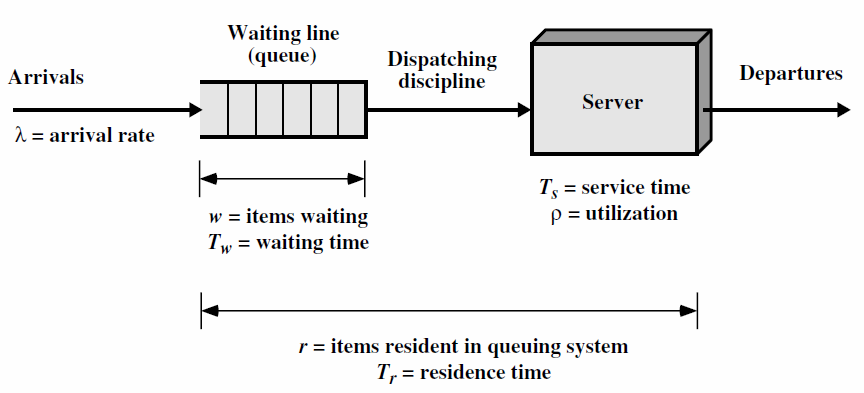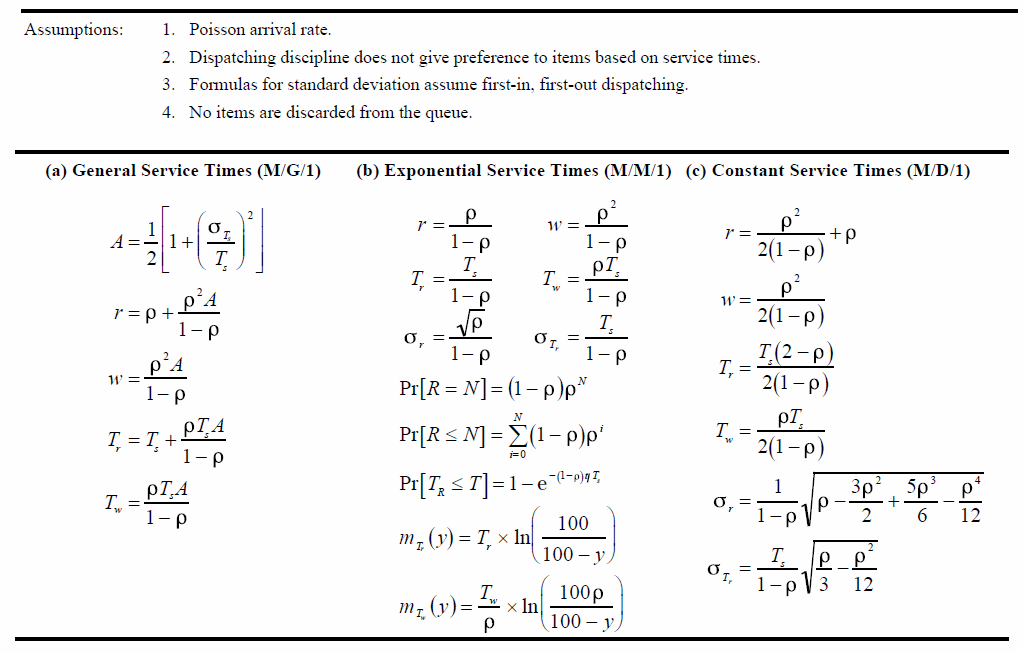Catatan
Tulisan ini merupakan tugas S1 mata kuliah Sistem Antrean Telekomunikasi saya di Jurusan Teknik Elektro, Fakultas Teknik, Universitas Udayana. Tugas ini tidak pernah dipublikasi dimanapun dan saya sebagai penulis dan pemegang hak cipta melisensi tulisan ini customized CC-BY-SA dimana siapa saja boleh membagi, menyalin, mempublikasi ulang, dan menjualnya dengan syarat mencatumkan nama saya sebagai penulis dan memberitahu bahwa versi asli dan terbuka ada disini.
BAB 1 Pendahuluan
1.1 Latar Belakang
Teori antrean merupakan suatu teori dimana pelanggan harus antri untuk mendapatkan pelayanan dari pelayan. Teori antrean bertujuan untuk mengatur tingkat pelayanan dengan data kedatangan pelanggan. Pada teori antrean terdapat cara untuk mengatur tingkat pelayanan yang tepat, tingkat kesibukkan pelayan, berapa lama suatu pelanggan harus menunggu, berapa jumlah pelanggan dalam antrean, berapa besar ruang tunggu yang harus disiapkan, dan lain-lain. Di dunia nyata suatu pelayanan tidak terlepas dari antrean, termasuk pelayanan pada jaringan data. Untuk mensimulasikan antrean pada jaringan data telah tersedia banyak perangkat lunak seperti Network Simulator, yang kini telah berkembang menjadi NS3 (Network Simulator 3). Pada NS3 antrean dapat diatur secara manual namun telah tersedia 2 jenis antrean yang sudah jadi yaitu Droptail dan RED(Random Early Detection)Queue. Sudah tersedia contoh yang dibuat oleh Marcos Talau dan Duy Nguyen. Pada makalah ini akan disimulasikan REDQueue pada jaringan komputer point-to-point sederhana.
1.2 Rumusan Masalah
Bagaimana simulasi REDQueue yang telah disediakan oleh Marcos Talau dan Duy Nguyen?
1.3 Tujuan
Untuk mensimulasikan REDQueue oleh Marcos Talau dan Duy Nguyen pada NS3.
1.4 Manfaat
- Mendapatkan gambaran simulasi antrean REDQueue.
- Dapat menerapkan simulasi antrean sendiri.
1.5 Ruang Lingkup dan Batasan
- Menggunakan jaringan Ipv4 point-to-point.
- Pada jaringan < 10Mbps.
- Menggunakan simulator NS3 versi Linux.
- Menggunakan Droptail dan REDQueue yang disediakan pada NS3.
BAB 2 Tinjauan Pustaka
2.1 Antrean
Model antrean sederhana dapat dilihat seperti berikut:

Gambar 2.1 Model antrean sederhana
Pada gambar 2.1 terlihat kedatangan pelanggan λ dalam satuan erlang, pada sistem disediakan ruang tunggu maksimum w dengan masing-masing pelanggan ada waktu tunggu Tw, dan ada pelayan s dengan waktu pelayanan Ts dimana tingkat kesibukannya adalah p. Tr merupakan waktu rata – rata suatu pelanggan menunggu di sistem, dan r merupakan jumlah pelanggan dalam sistem. Untuk perhitungan dapat dilihat gambar berikut (Stalling, 1998):

Gambar 2.2 Perhitungan antrean dasar

Gambar 2.3 Perhitungan 3 jenis antrean
2.2 Droptail dan RED (Random Early Detection) Queue
Droptail menggunakan antrean dasar yaitu FIFO (first in first out) dengan membuang paket bila buffer pada node penuh, sedangkan Random Early Detection memerintahkan suatu koneksi untuk mengurangi kecepatan sebelum buffer penuh. Tujuan RED adalah congestion avoidance lebih untuk menghindari kongesti dari pada mengatasi, global synchronization avoidance, Avoidance of bias against bursty traffic, dan bound on average queue length untuk mempertahankan rata-rata panjang antrean maka mempertahankan rata-rata delay. Secara umum algoritma dari RED adalah rata-rata panjang antrean lebih kecil dari batasan minimal yang ditentukan, maka paket akan antre. Bila rata-rata panjang antrean diantara batasan minimal dan batasan maksimal maka akan ada probabiltas pembuangan paket. Bila diatas maksimal maka akan terjadi pembuangan paket (Stallings, 1998).
2.3 Network Simulator 3
ns-3 adalah simulator jaringan kejadian diskrit, ditargetkan terutama untuk penelitian dan penggunaan pendidikan. ns-3 adalah perangkat lunak bebas, dilisensikan di bawah lisensi GNU GPLv2, dan publik untuk penelitian, pengembangan, dan penggunaan (ns3-project, 2012).
BAB 3 Metode Percobaan
3.1 Tempat dan Waktu Percobaan
Percobaan dilakukan di Rumah pada tanggal 30 Mei 2013.
3.2 Alat
Tabel 3.1 Alat yang digunakan
| NO |
Alat |
Spesifikasi |
| 1 |
Laptop ACER |
Intel® Pentium® dual – core processor T4200 (2.0 GHz, 800 MHz FSB, 1 MB L2 cache) Mobile Intel® Graphics Media Accelerator 4500MHD 1GB DDR2 128 WXGA Acer CrystalBriteTM LCD 250GB HDD Realtek Semiconductor Co., Ltd. RTL8111/8168B PCI Express Gigabit Ethernet Controller Atheros Communications Inc. AR928X Wireless Network Adapter Operating System Linux Backtrack 5 R3 |
| 2 |
Software |
NS3 (Network Simulator 3) |
3.3 Program
Program pertama mengambil contoh dari John Abraham yaitu perbandingan Droptail dengan RED. Program kedua adalah tentang REDQueue dari Marcos Talau dan Duy Nguyen.
/* -*- Mode:C++; c-file-style:"gnu"; indent-tabs-mode:nil; -*- */
/*
* This program is free software; you can redistribute it and/or modify
* it under the terms of the GNU General Public License version 2 as
* published by the Free Software Foundation;
*
* This program is distributed in the hope that it will be useful,
* but WITHOUT ANY WARRANTY; without even the implied warranty of
* MERCHANTABILITY or FITNESS FOR A PARTICULAR PURPOSE. See the
* GNU General Public License for more details.
*
* You should have received a copy of the GNU General Public License
* along with this program; if not, write to the Free Software
* Foundation, Inc., 59 Temple Place, Suite 330, Boston, MA 02111-1307 USA
*
* Author: John Abraham <john.abraham@gatech.edu>
*
*/
#include "ns3/core-module.h"
#include "ns3/network-module.h"
#include "ns3/internet-module.h"
#include "ns3/point-to-point-module.h"
#include "ns3/applications-module.h"
#include "ns3/point-to-point-layout-module.h"
#include
#include
#include


